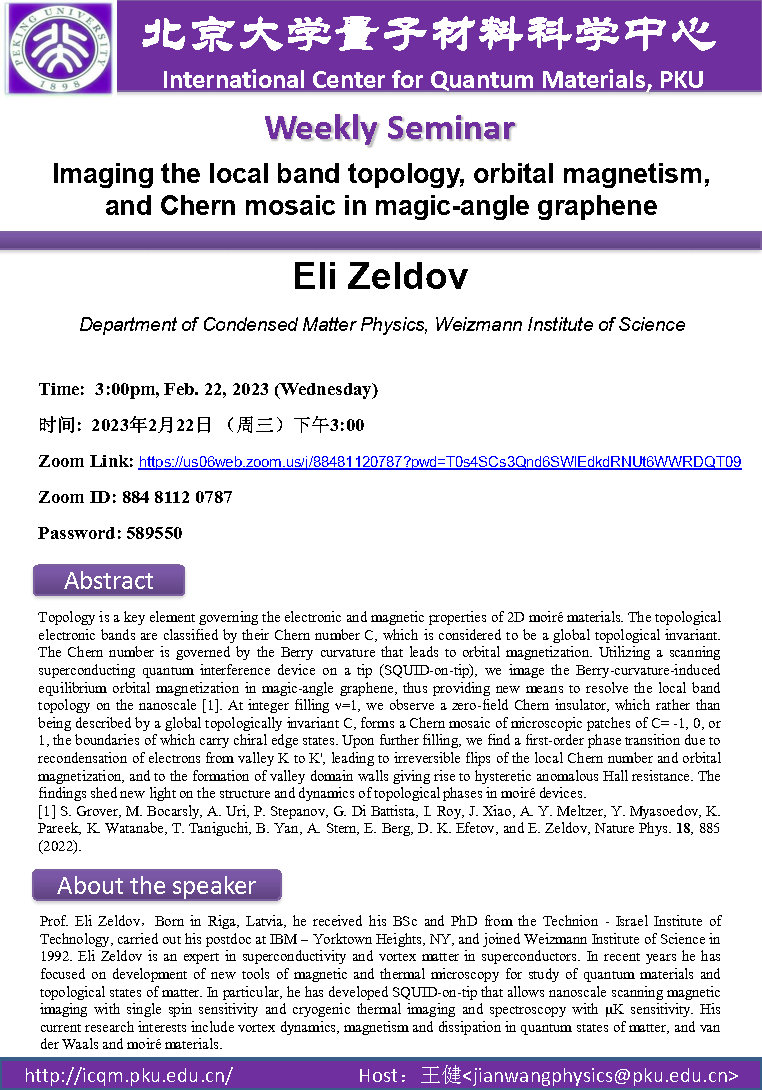Speaker: Eli Zeldov, Weizmann Institute of Science
Time: 3:00 pm, Februray 22, 2023, GMT+8
Venue: Zoom Meeting ID: 884 8112 0787 Password: 589550
Abstract:
Topology is a key element governing the electronic and magnetic properties of 2D moiré materials. The topological electronic bands are classified by their Chern number C, which is considered to be a global topological invariant. The Chern number is governed by the Berry curvature that leads to orbital magnetization. Utilizing a scanning superconducting quantum interference device on a tip (SQUID-on-tip), we image the Berry-curvature-induced equilibrium orbital magnetization in magic-angle graphene, thus providing new means to resolve the local band topology on the nanoscale [1]. At integer filling ν=1, we observe a zero-field Chern insulator, which rather than being described by a global topologically invariant C, forms a Chern mosaic of microscopic patches of C= -1, 0, or 1, the boundaries of which carry chiral edge states. Upon further filling, we find a first-order phase transition due to recondensation of electrons from valley K to K', leading to irreversible flips of the local Chern number and orbital magnetization, and to the formation of valley domain walls giving rise to hysteretic anomalous Hall resistance. The findings shed new light on the structure and dynamics of topological phases in moiré devices.
[1] S. Grover, M. Bocarsly, A. Uri, P. Stepanov, G. Di Battista, I. Roy, J. Xiao, A. Y. Meltzer, Y. Myasoedov, K. Pareek, K. Watanabe, T. Taniguchi, B. Yan, A. Stern, E. Berg, D. K. Efetov, and E. Zeldov, Nature Phys. 18, 885 (2022).
Biography:
Prof. Eli Zeldov,Born in Riga, Latvia, he received his BSc and PhD from the Technion - Israel Institute of Technology, carried out his postdoc at IBM – Yorktown Heights, NY, and joined Weizmann Institute of Science in 1992. Eli Zeldov is an expert in superconductivity and vortex matter in superconductors. In recent years he has focused on development of new tools of magnetic and thermal microscopy for study of quantum materials and topological states of matter. In particular, he has developed SQUID-on-tip that allows nanoscale scanning magnetic imaging with single spin sensitivity and cryogenic thermal imaging and spectroscopy with µK sensitivity. His current research interests include vortex dynamics, magnetism and dissipation in quantum states of matter, and van der Waals and moiré materials.
Source: School of Physics
